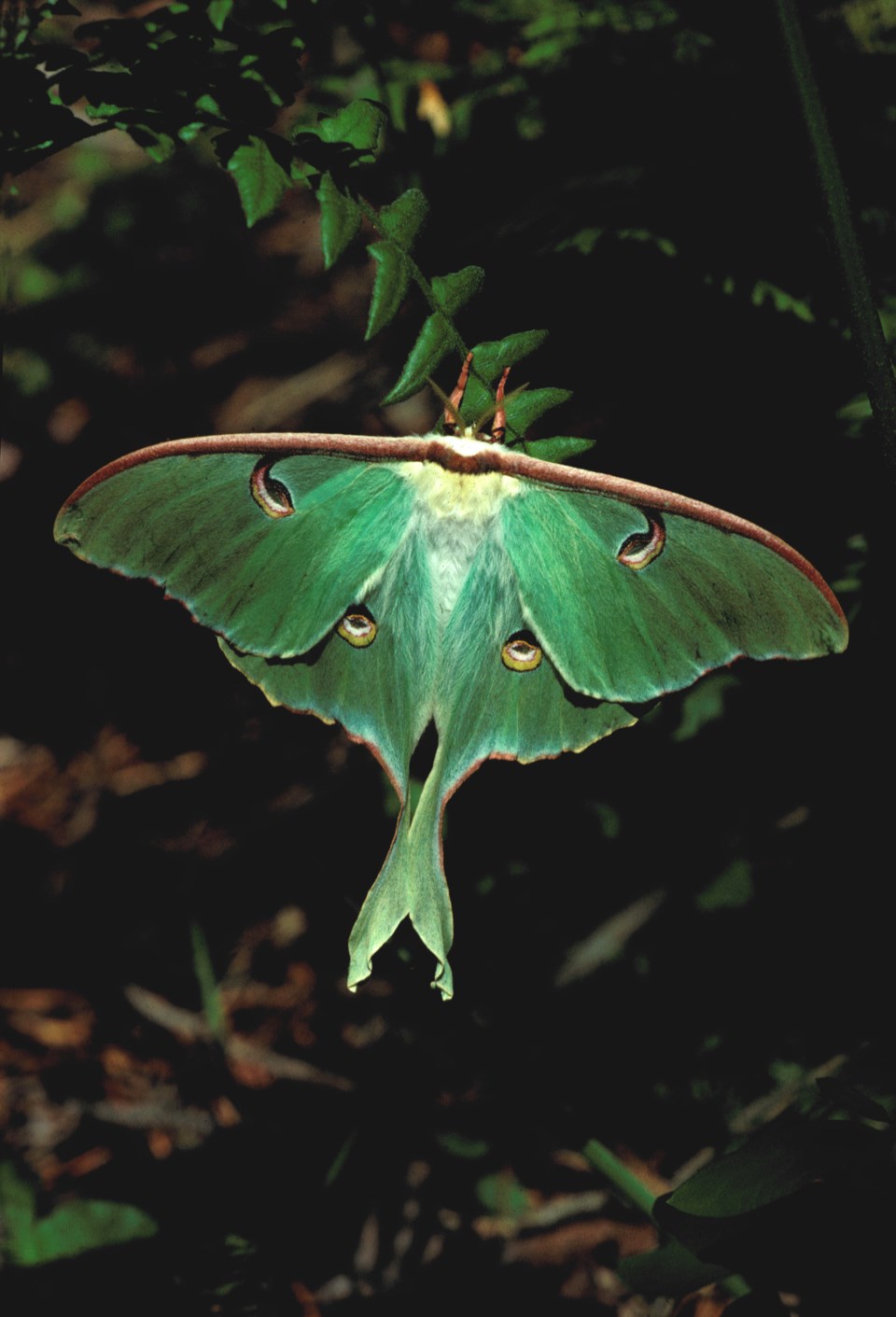They are big, green, elegant, and look like they belong in a tropical jungle; for a week or two, they will be hanging out around your back porch light. "They" are the Luna moths, one of the largest species of moths that we have in our region.
Truly unmistakable in appearance, these creatures are the show-stoppers of moth design. Being about the size of your open hand, with trailing hind wings adorned with spectacular black-and-yellow 'eye spots,' these moths command your attention when encountered. There are other large moths that may be closely related, but the others are a much more subtle blend of browns and greys. None of the others sport such an arresting hue as these lime-green beauties.
One of the early colonists from Europe, a chap by the name of James Petiver, was a keen naturalist-scientist and took to describing insects in great detail as well providing a name for each of the critters. From the group of large silk moths, the Luna moth was the first to be named and classified, in 1700. Jim's Latin name translated as "brilliant feather tail."
However, as happens in the world of science, another and better known naturalist-scientist was hard at work back in Europe coming up with names for animals and plants. He was Carl Linnaeus and his system of classifying living things caught on big time and this unique moth was reassigned a new name tag, honouring the Roman moon goddess, Luna. (The other silk moths also bear monikers of the Roman gods: Cecropia and Polyphemus.)
Note that the name is "Luna," not "lunar." Luna is a goddess; lunar pertains to something from the moon. This falls under my pet peeve of slurred nomenclature, other examples being a ruffled grouse (ruffed grouse), great blue herring (great blue heron) or a painter (midland painted turtle). Sigh.
Adult Luna moths usually appear in mid-June, but this cold, wet spring seems to have delayed everything, and they are just now showing up. Two separate sightings were reported in the Washago area on July 10.
Like a candle in the wind, these magnificent moths are short-lived in their adult stage of life. After emerging from their cocoon, they have up to two weeks to find a mate and lay eggs. During this time they do not eat as the adults do not have a mouth. All their internal energy had to be gained during the caterpillar stage. And what an enormous amount of energy that has to be, as just before pupating (making a cocoon), the caterpillar ejects a huge amount of waste material, has to stitch together leaves as a protective shield, goes through metamorphosis (magical process of turning its caterpillar body into soup and realigning the cells to make a moth), survives the freezing cold of winter, cuts itself out of the cocoon, and then flies about seeking a mate, all the while creating about 300 eggs in her abdomen. Can you say exhaustion?
Two weeks as an egg, seven weeks as a caterpillar, nine to 10 months as a pupae inside the cocoon, and a big finale of two weeks as a breeding adult. To see one is a special treat for us, as their personal schedule is a tad full for social interactions.
Once the female moth finds a good position, high in a tree, she settles down and waits ’til midnight. Only after it's dark does she release her volatile sex pheromones into the sweet, gentle breezes, and then she waits, as the boys will come to her.
The male Luna moths have large feathery antennae, used to pick up trace elements in the air of those come-hither pheromones. If the scent-laden breeze hits the moth from the left side, the pheromones cause the left wings to stop flapping, thus wheeling him left due to the now overpowering thrust from the right wings. Once heading into the scent path, both wings are now on autopilot, swerving neither right nor left. Target is locked, engagement imminent.
The female accepts only one mate. Johnny-come-latelys have to shake off the spell and find another. Studies have shown that although these pheromones are quite powerful, no other moth species is affected.
After a night of romantic sitting around with each other in the treetop, the female begins laying the eggs, usually on the underside of leaves of hardwood trees. While many insects are tied to a specific plant species for food (think monarch butterfly and milkweed), Luna caterpillars will eat from a variety of hardwood trees. After mating, the male dies of boredom (and probably not being able to eat) and the female soon perishes from her efforts of egg laying.
While searching for that perfect mate, some moths are misdirected to bright lights (such as that bright light on the back porch) and may end up resting there until dawn. While this is the usual way to find a Luna moth, you may also see one at dusk, flying by between woodlots, silhouetted against a light night sky, stars sparkling, moon rising. Ah, the romance of it all.
